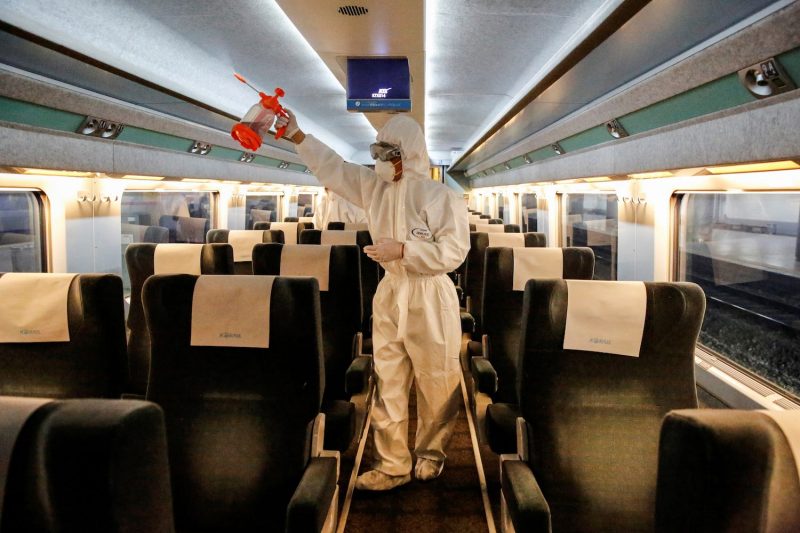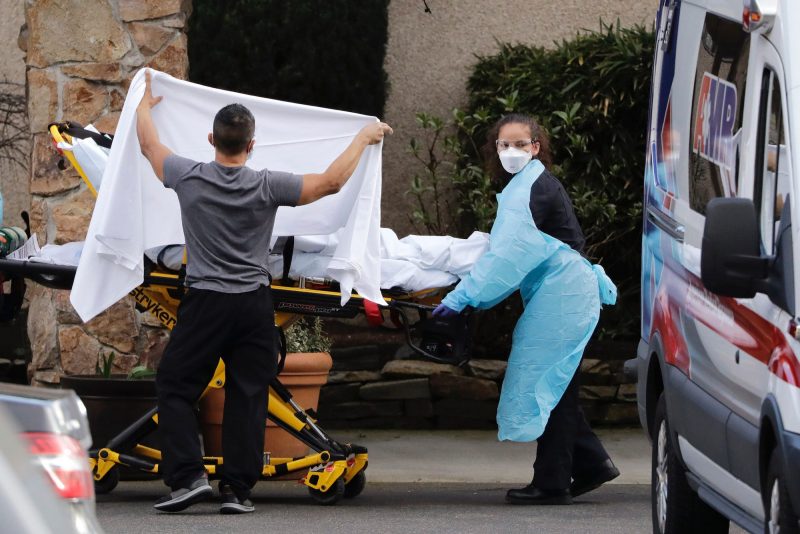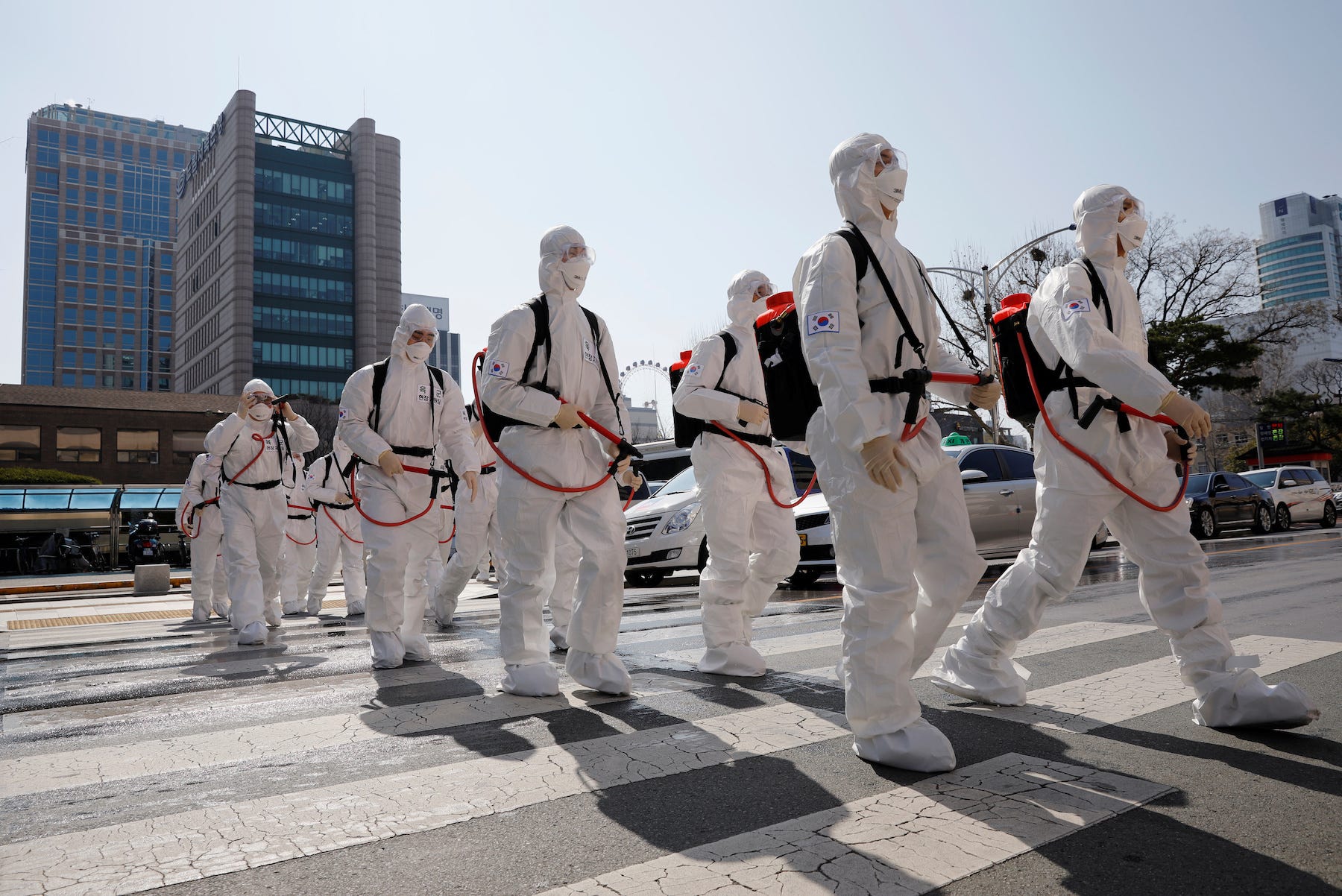- South Korea has tested more than 140,000 people for the new coronavirus and confirmed more than 6,000 cases. Its fatality rate is around 0.6%.
- This suggests that, as many health experts have predicted, the virus’ fatality rate seems to decrease as more cases are reported.
- That’s because more widespread testing leads more mild cases to be included in the count.
- The US, by contrast, has tested around 1,500 people. The country has 221 confirmed cases and 12 deaths, suggesting a death rate of 5%.
- The US’ testing capacity has been limited.
- Visit Business Insider’s homepage for more stories.
The US and South Korea announced their first cases of the coronavirus on the same day: January 20. More than six weeks later, the US Centers for Disease Control and Prevention has tested around 1,500 people for the virus. South Korea, meanwhile, has tested about 140,000.
The nation is capable of conducting as many as 10,000 tests per day and has built drive-thru testing clinics that can detect coronavirus cases in just 10 minutes. Officials say the clinics can reduce testing time by a third.
This quick response has allowed South Korea to detect more than 6,000 coronavirus patients, around 35 of whom have died. That means the country’s fatality rate – the number of deaths out of the total number of infections – is around 0.6%.
The World Health Organization estimated on Tuesday that the global fatality rate for the coronavirus is around 3.4%. Some health experts predict that this rate will decrease as the number of cases rises. South Korea offers solid evidence for that prediction so far.
Widespread testing could mean a lower death rate because the majority of coronavirus cases - around 80% - are considered mild. But the cases reported first are often those with the most severe symptoms, since those people go to the hospital. Milder cases, on the other hand, could go uncounted or get reported later on.
"If indeed we discover that there are far more cases that are actually being reported, and that one of the primary reasons for this is that we're just not detecting asymptomatic or mild or moderately symptomatic cases that don't end up seeking healthcare, then our estimates for the case fatality rate will likely decrease," Lauren Ancel Meyers, an epidemiologist at the University of Texas at Austin, told Business Insider.
Mild cases, she added, "may not make it onto the radar of public health agencies."
In the US, people without severe symptoms haven't been tested because of limited availability, which may explain why the nation's death rate so far is high: more than 5%.
That's higher than the death rate in China - nearly 4% - where the outbreak started.
Many mild cases could go undetected
People under age 40 have just a 0.2% risk of dying from the virus, early research has shown. The majority of severe cases are among elderly patients or those with preexisting health problems.
"Most people who get infected won't even know they have it," New York Gov. Andrew Cuomo said at a press briefing on Wednesday. A day later, he added: "The facts do not merit the level of anxiety that we are seeing."
But until Wednesday, the CDC had only tested people who had recent exposure to a confirmed patient, had travelled to a country with an outbreak, or required hospitalization. This has made it difficult for doctors and health officials to test or diagnose many patients with mild cases, which likely explains the US' high death rate.
"There's another whole cohort that is either asymptomatic or minimally symptomatic," Anthony Fauci, director of the National Institute of Allergy and Infectious Diseases, said in a February 6 briefing. "We're going to see a diminution in the overall death rate."
'You don't have the capacity to test everybody'
South Korea saw a spike in coronavirus cases after a 61-year-old woman transmitted the virus to other members of a fringe religious group, the controversial Shincheonji Church of Jesus. On February 23, South Korean president Moon Jae-in warned that the country faced "a grave turning point" in its efforts to contain the outbreak.
Since then, it has implemented widespread testing.
In the US, the CDC opted to develop its own test, one that could identify multiple viruses, ProPublica reported. But the tests turned out to be faulty: A problem with one ingredient caused more than half of state labs to receive inconclusive results. In response, the CDC said it would replace the ingredient and manufacture new tests.
"What happened in the US is the CDC created and sent out a test to all 50 states and then said, 'Wait, hold up, don't use it,'" Matthew McCarthy, a hospitalist at Weill Cornell Medicine in New York City, told CNBC last week.

By the end of February, only three of the nation's more than 100 public-health labs had verified the CDC test for use. In the meantime, labs had to send samples to the CDC in Atlanta to confirm a case. That causes a delay of up to 48 hours between testing and confirmation.
"At first, CDC was the only place where testing could be performed," Richard Martinello, an associate professor of infectious disease at the Yale School of Medicine, told Business Insider. "For a country of our size, when you only have a single site doing that, it limits the resources available for testing."
McCarthy told CNBC he had to call the Department of Health and "plead to test people" at his hospital in New York.
The US has reported around 220 cases of the virus so far, though the CDC has only confirmed 148. The confirmed cases include 46 passengers who were quarantined on the Diamond Princess cruise ship in Japan and three repatriated evacuees from Wuhan, China. But researchers at the Seattle Flu Study estimated that the number of infections in Washington state alone may have already reached 570.
The US' official death count as of Thursday is 12.

On Saturday, the Food and Drug Administration (FDA) began allowing academic hospital labs to develop and use their own coronavirus tests. The New York health department is now partnering with local hospitals to expand testing capacity for the virus, Gov. Andrew Cuomo said on Tuesday. The goal is to conduct 1,000 test per day, he added - but the current capacity is still limited.
"We're at a couple of hundred tests per day, so you prioritize who can be tested," Cuomo said. "You don't have the capacity to test everybody 'just in case.'"

